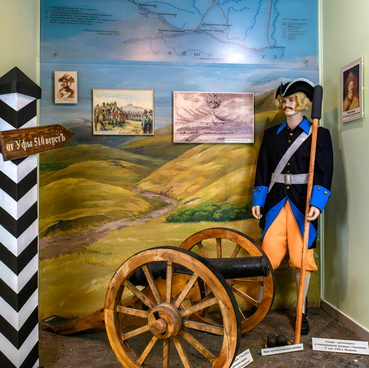At the end of the 19th Century the district town of Orsk was home to more than 200 shops, but the most important centers for buying and selling were the Trading Houses.
One of these, the G Bashkirov and Co. Trading House, was established in the 1910s by Gavriil Bashkirov, a member of the 2nd guild of merchants from the town of Verkhneuralsk, in specially constructed premises on the corner of Isayevskaya and Bolshaya Streets (now Engelsa and Sovietskaya Streets).
At the beginning of the century the new emporium opened two departments simultaneously: manufactured goods and groceries. At each entrance to the trading house there stood apprentices dressed in livery, who would invite shoppers to come into the building. And next to the building there was a parking area for carriages, with a line of hitching posts to which horses were tethered.
One of these, the G Bashkirov and Co. Trading House, was established in the 1910s by Gavriil Bashkirov, a member of the 2nd guild of merchants from the town of Verkhneuralsk, in specially constructed premises on the corner of Isayevskaya and Bolshaya Streets (now Engelsa and Sovietskaya Streets).
At the beginning of the century the new emporium opened two departments simultaneously: manufactured goods and groceries. At each entrance to the trading house there stood apprentices dressed in livery, who would invite shoppers to come into the building. And next to the building there was a parking area for carriages, with a line of hitching posts to which horses were tethered.
In the late 19th and early 20th Centuries many residents in cities who wanted to earn a nest egg would start working for a merchant, and in time would be able to build up a network of contacts, gain experience and work their way up to a senior position in the hierarchy of the trading house. The position of apprentice was the first stage on the long route to success. Children from poor families were often sent to work for a merchant, so that they could gain the practical skills required for a career in trade. This was considered to be a demanding job- the apprentices would have to carry out all the wishes of the merchant - serving in his home, packing orders, unloading and delivering goods, helping in the shop and covering for other staff. Very often the apprentices would work without payment, just being given meals by their master.
Once they had finished their apprenticeship, the lads would be able to work as shop assistants for the merchant, or, armed with a letter of recommendation from their employer, try their luck in another trading house. Perhaps the most common position in commerce was that of shop assistant. Their functions included serving customers or working at the till, and overseeing the work of other shop staff.
The most senior position in the Trading House was that of Manager. Managers had extensive authority to enter into major contracts, represent their employer in negotiations and make decisions on engaging or dismissing staff. These trusted employees were responsible for certain areas of the trading house’s business, oversaw major purchases and, if necessary, could stand in for their employer. In many cases, after working for several years in such a position they opened their own business.
Once they had finished their apprenticeship, the lads would be able to work as shop assistants for the merchant, or, armed with a letter of recommendation from their employer, try their luck in another trading house. Perhaps the most common position in commerce was that of shop assistant. Their functions included serving customers or working at the till, and overseeing the work of other shop staff.
The most senior position in the Trading House was that of Manager. Managers had extensive authority to enter into major contracts, represent their employer in negotiations and make decisions on engaging or dismissing staff. These trusted employees were responsible for certain areas of the trading house’s business, oversaw major purchases and, if necessary, could stand in for their employer. In many cases, after working for several years in such a position they opened their own business.




